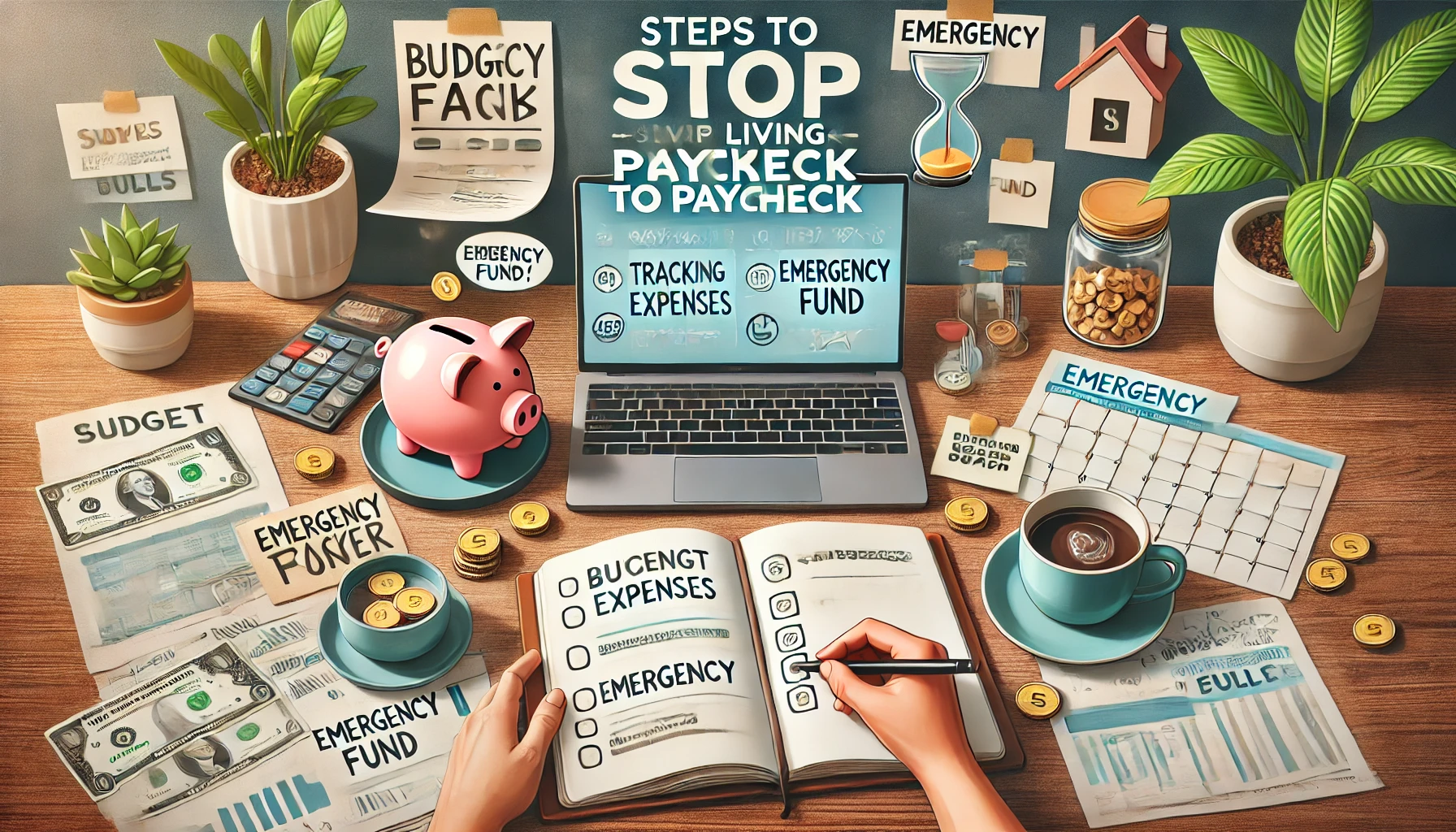Living paycheck to paycheck feels like a never-ending cycle. You work hard, the money comes in, the bills go out—and you’re left with little (or nothing) until the next payday.
If this sounds familiar, you’re not alone. Millions of people are stuck in this pattern. But the good news is: you can break free, even if your income isn’t high.
In this article, you’ll learn step by step how to stop living paycheck to paycheck, build a safety net, and take back control of your money—without needing a second job or a lottery win.
Why Breaking the Cycle Matters
Living paycheck to paycheck means:
- Constant stress and anxiety
- No room for emergencies or surprises
- Difficulty reaching financial goals
- Feeling stuck—even if you earn a decent income
Escaping this cycle gives you freedom, peace, and options. And it starts with a few smart changes.
Step 1: Track Every Dollar for One Month
Before you can fix anything, you need to know where your money is going.
How to do it:
- Use a notebook, spreadsheet, or app like Mint or YNAB
- Track every expense—no matter how small
- Group your spending into categories: rent, food, debt, entertainment, etc.
This shows you exactly what’s happening—and where the leaks are.
Step 2: Build a Bare-Bones Budget
A bare-bones budget focuses only on essentials: what you truly need to survive and work.
Essentials include:
- Rent/mortgage
- Utilities
- Transportation
- Groceries
- Basic healthcare
- Minimum debt payments
This temporary budget helps you create breathing room while you reset your finances.
Step 3: Cut or Pause Non-Essentials
To free up cash, pause or reduce anything that isn’t a need (for now).
Look at:
- Streaming services
- Takeout or delivery
- Subscriptions
- Shopping or impulse buys
- Gym memberships
This isn’t forever—it’s just until you’re ahead of the paycheck cycle.
Step 4: Build a Mini Emergency Fund
Start by saving just $500 to $1,000. This helps you avoid using credit cards when something goes wrong.
Where to find the money:
- Sell unused items
- Cancel subscriptions
- Use your tax refund
- Set aside a small amount from each paycheck (even $10 helps)
Keep this fund in a separate savings account for quick access.
Step 5: Pay Off or Reduce High-Interest Debt
Debt keeps you trapped. Every payment you make is money you can’t use elsewhere.
Start with:
- Credit cards
- Payday loans
- Personal loans
Use the snowball method (smallest balance first) or avalanche method (highest interest first)—whichever motivates you more.
Every debt you eliminate is a monthly win.
Step 6: Create a One-Month Buffer
The goal: have enough money in your account to cover next month’s bills before the month even begins.
How to do it:
- Save one paycheck at a time
- Use windfalls (bonuses, tax refunds, etc.)
- Keep living on last month’s income while stacking this month’s
This is the game-changer that breaks the paycheck-to-paycheck cycle for good.
Step 7: Automate and Simplify Your Finances
Set up:
- Automatic bill payments to avoid late fees
- Transfers to savings right after payday
- Reminders for subscription renewals or irregular expenses
Automation reduces stress and helps you stay consistent—especially when life gets busy.
Step 8: Increase Your Income (Even Slightly)
If your budget is too tight to save or pay down debt, bringing in extra income can make all the difference.
Options:
- Freelance or gig work (Uber, Fiverr, writing, delivery)
- Sell items online
- Offer local services (babysitting, tutoring, cleaning)
- Ask for a raise or new role at work
Even $100–$300 extra per month can change your financial future.
Step 9: Use Cash or Prepaid Cards for Daily Spending
Using only cash or prepaid cards for groceries, gas, and extras helps you avoid overspending.
It also makes you more aware of what’s left—and keeps you from dipping into bill money.
Step 10: Celebrate Small Wins
Progress takes time. But every step forward counts.
Wins worth celebrating:
- You saved your first $100
- You paid off one credit card
- You had money left at the end of the month
- You stuck to your budget for a full week
Track your wins to stay motivated and keep the momentum going.
Final Thought: One Change at a Time = Real Freedom
You don’t have to be perfect. You don’t need a huge salary. You just need a plan—and the belief that your money can work for you.
Start small. Stick with it. And soon, you won’t just be surviving between paychecks—you’ll be thriving beyond them.
You’ve got this. 💪💸
